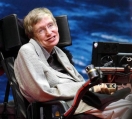题目内容
The virus Ebola is reported ______ over 3,000 lives in 5 countries of West Africa by now.
A. taking B. having taken
C. to take D. to have taken
D
【解析】
试题分析:考查时态。根据句意可知埃博拉病毒是已经发生了的事,并且是被报道,以及句尾时间状语by now到现在,所以要用现在完成时,sth.be reported to表示某事被报道...,故采用不定式。句意:据报道,到现在为止埃博拉病毒已经导致西非5个国家超过3000人死亡了, 故选D。
考点:考查时态

假如你是李华,你的笔友Tom发来电子邮件询问你的音乐喜好和你在新年晚会上的表现。请你给他写封电子邮件,回答他的所有问题。
Dear Li Hua, From your last e-mail, I am glad to know you like music and performed at the New Year Party. I am eager to know what kind of music you like and dislike best and why. And since you are so busy with your studies, I want to know when and how you listen to music. Besides, at the New Year Party, did you sing or play a musical instrument? Is it a success? Looking forward to your reply. Yours, Tom |
注意:1.词数100左右;
2.可以适当增加细节,以使行文连贯;
3.信的抬头与结尾已为你写好,但不计入总词数。
Hi, Tom,
As you know, I’m music mad. _______________________________________________
____________________________________________________________________________
____________________________________________________________________________
By the way, do you love music as well?
